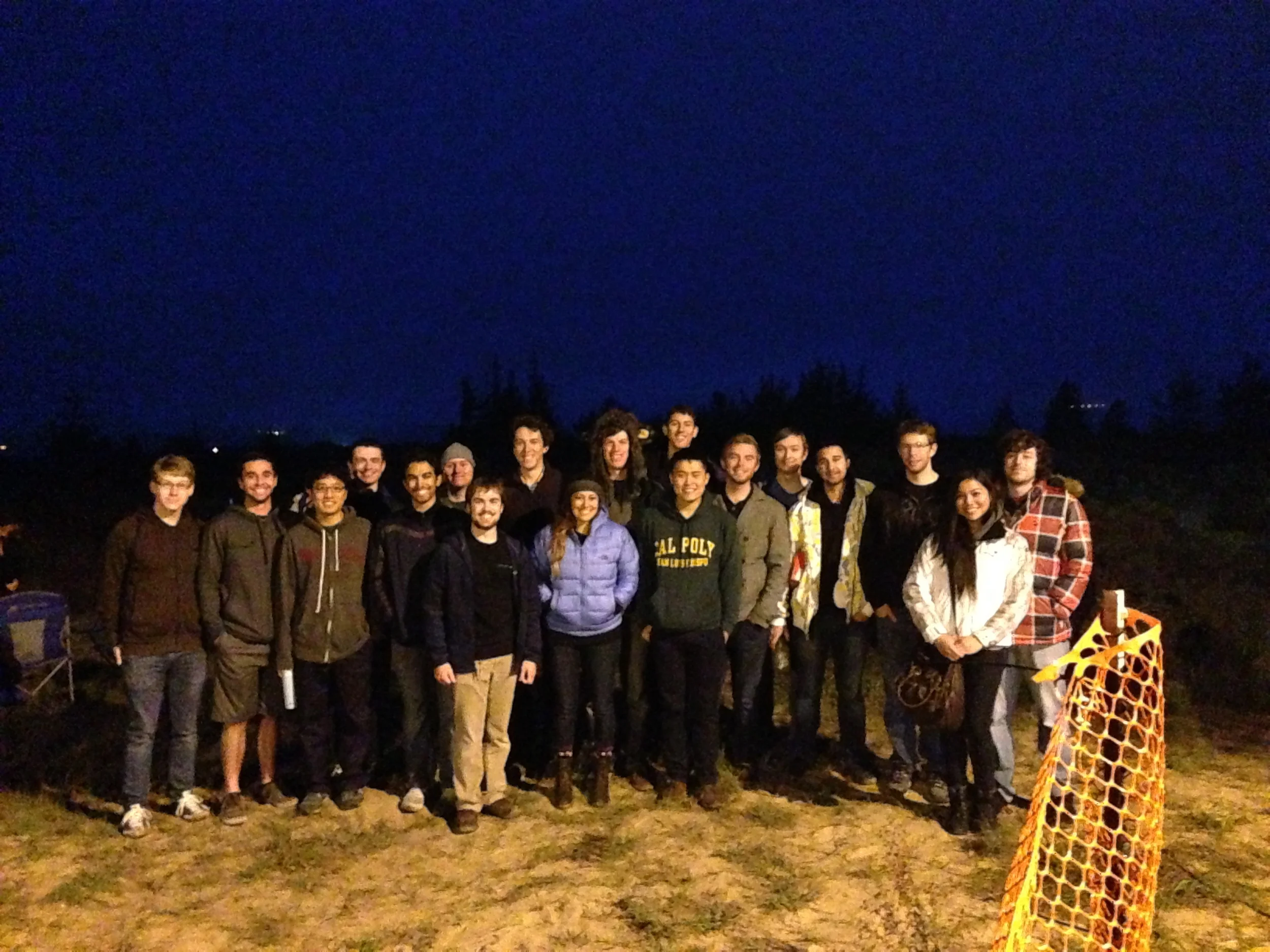Tracking LightSail
During the first few hours of Lightsail's deployment, our own Justin Foley was in Australia. Thankfully he was still able to receive packets through a hand held yagi antenna and a tripod while on travel!
LightSail has Launched!
LightSail, a Planetary Society CubeSat, launched this morning with ULTRASat aboard an Altas V from Florida.
On the first pass the Cal Poly UHF groundstations heard the first few packets of data from the satellite! In addition to providing ground support, Cal Poly designed the avionics and UHF comms boards for the mission.
Go LightSail!
Thanks to Justin Foley, John Bellardo, Robert Potter and Nik Powell for operating the groundstations on the first pass and decoding packets.
Nik Powell working the CalPoly groundstation:
IPEX's Mission has Ended
IPEX was launched December 6th, 2013. The last transmission heard from it was on January 30th, 2015. IPEX completed its mission, autonomous image processing and data reduction, fairly early after launch. During the remainder of its functional life, it continued to transmit down health data. With nearly a years worth of health files, the team has been able to observe how the electronics behave in harsh environments. We have learned a great deal from IPEX.
Thank you IPEX for over a year of service! Orbit in Peace.
ExoCube Status Update
ExoCube was launched January 31st 2015 on a Delta II from Vandenberg Air Force Base as a secondary payload.
Since deployment ExoCube has been a little quiet. Unfortunately, the transmit power has been lower than expected. Thankfully there is been great support in the community. SRI has been generous and has allowed us to use their 150′ dish. Members of the Cal Poly team drove to SRI on Sunday (2/8/15) to use the dish for the night and the following morning. We received a significant amount of health and telemetry data from the spacecraft!
The Cal Poly team reviewed the telemetry data and determined that the antenna unfortunately hasn’t deployed. Multiple deploy commands have been sent to the antenna. At some point during shock and vibes testing and the ride up the mechanism broke.
We have been investigating options for long term solutions. The team has investigated ways to still receive important data from the payload with limited data capacity from the satellite. The mission will move on!
Thank you to all the people who have offered their stations to help the mission.
Also thank you Bryan Klofas and Steve Muther for making time in their schedule to operate the SRI dish.
It's Alive!
After a amazing launch, the PolySat team returned to the lab at Cal Poly to hear the first signs of life from ExoCube. ExoCube’s RF transmit timer was set for three hours after deployment as a safety precaution to allow multiple antenna deployment attempts to happen on a full battery. The wait for someone to hear us was almost unbearable once GRIFEX and Firebird 3/4 were heard.
Michigan finally picked up a some blips on the correct frequency spaced 45 seconds apart. ExoCube was heard!
Thanks to PE0SAT for the recording and Logan Sisca for the annotation of ExoCube’s Morse code beacon “XO3”.
The first two way communication was also completed tonight.
ExoCube is in Space!
This morning SMAP launched on top a Delta II rocket. Along for the ride were four CubeSats: Exocube, Firebird-2 and GRIFEX.
More information is available on the CubeSat website and on the Exocube page.
The ExoCube decoder is now available here. Java 1.6 is required to run it.
The TLEs can be found here.
Watch the launch below!
PolySat and CubeSat at the launch.
Exocube Launch Attempt #1
The PolySat and CubeSat team visited Vandenberg Air Force Base this morning to watch the launch of Exocube on a Delta 2 rocket. Unfortunately the launch attempt was scrubbed. The next attempt is on Saturday 31th 2015 at 6:20 am.
Cal Poly's New Ground Station is moving along!
Cal Poly’s third ground station Friis is coming together after significant work by the PolySat lab.
Friis will be able to track LEO satellites and operates at 437MHz and will be capable of achieving significantly higher data rates than Cal Poly’s other two ground stations Marconi and Hertz. The radio transceiver and the the controller processor are identical to the ones on IPEX and ExoCube, the difference is the amplifier on the transmit size will be able to do about 400 watts out through four phased yagi antennas.




















